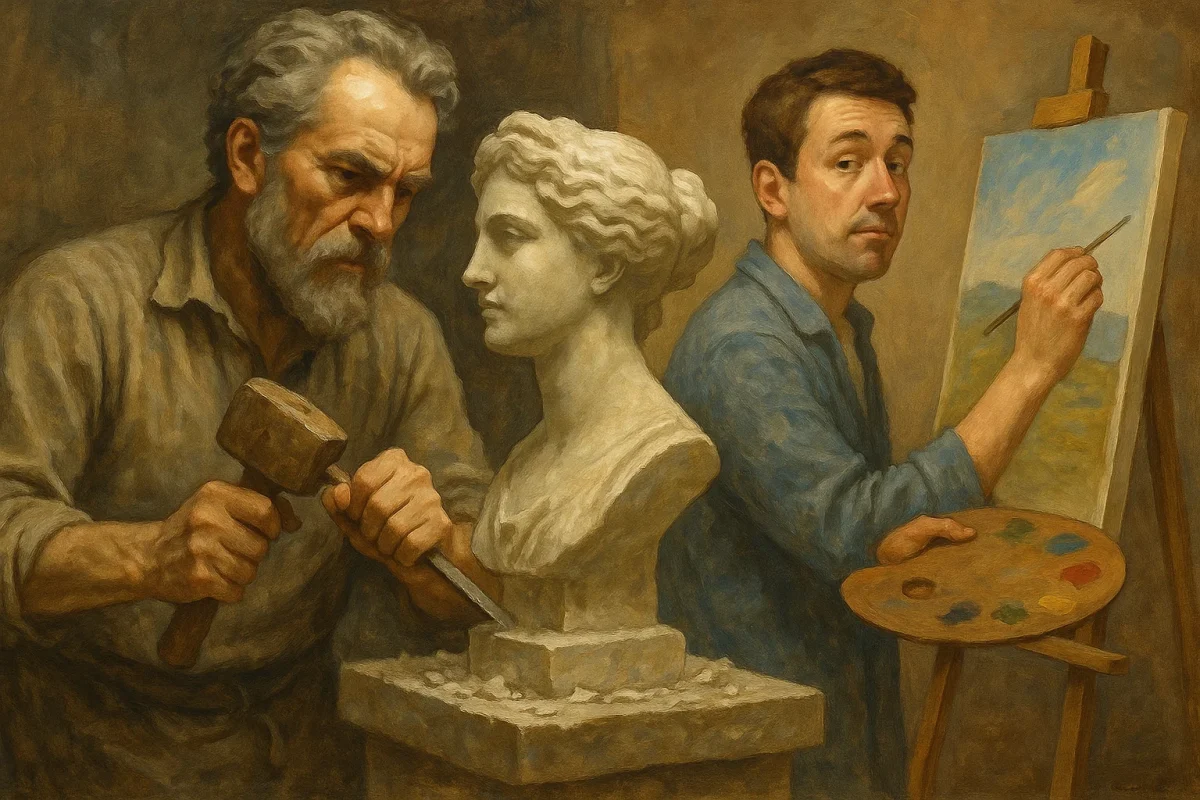To risk starting out this article with an obvious acknowledgement: Technology initiatives don’t all carry the same risks, rewards, or complexity. Some are iterative, reversible, and forgiving – akin in the art world to painting, where layers can be added and mistakes painted over. Others, however, are more like sculpture work: foundational, permanent, and unforgiving, where every strike of the chisel removes something that cannot be put back, and there is only one opportunity to get things really “right”.
For leaders considering a Virtual CIO engagement, or even just an advisory engagement such as Innovation Vista’s CIO IQ® service, understanding whether their IT initiative is a “painting” or “sculpture” exercise may be the most important decision they make. It determines not only the stakes of the project, but also the level of expertise required at the helm.
The Painter’s Canvas: Iterative, Recoverable Work
Many IT projects fall into this category. They are visible, incremental, and lend themselves to adjustment. A BI dashboard rollout, a modest workflow automation, or the gradual optimization of ERP modules all qualify as painter’s work. If the color balance is off, another coat can correct it.
For such projects, the risks of missteps, while present, are largely recoverable. This is why many Managed Service Providers (MSPs) and software development companies feel comfortable offering Virtual CIO services alongside their core business. Their strategic oversight is often secondary to selling managed hosting or custom software, but on straightforward “painting” projects, their approach can be “good enough.”
There are risks even here though: when CIO guidance is a “side business,” conflicts of interest may skew advice toward the provider’s core offerings rather than the client’s best interest. Innovation Vista frequently cautions clients not to let the “fox” guard the “henhouse”. Still, when the project itself is inherently iterative in “painting” mode, these risks are somewhat mitigated.
The Sculptor’s Block: Irreversible, High-Stakes Transformations
Some IT projects, however, are not paintings. They are sculptures. They involve reshaping the very foundations of the enterprise.
Consider a full-scale M&A integration: two companies with separate systems, cultures, and processes must be unified under immense time pressure. Every decision is structural; every misstep can destroy the deal’s promised synergies. There are no second coats of paint – just permanent, chiseled cuts.
Other sculptor-level projects include post-breach cybersecurity overhauls, enterprise-wide ERP replacements, or data-architecture redesigns. These are high-risk undertakings where one wrong strike can cripple operations or permanently erode trust.
In these moments, organizations need more than incremental advice. They need a true sculptor: a Virtual CIO whose entire craft is strategy, leadership, and transformation, and whose business expertise in the organization’s industry is absolutely critical.
Why the Firm Behind the Virtual CIO Matters
Just as one would never hire a hobbyist painter to sculpt a marble statue, companies cannot entrust sculptor-level projects to advisory teams for whom strategy is a sideline.
This is where “pure play” Virtual CIO firms – specialists like Innovation Vista and its direct competitors – stand apart. These organizations focus exclusively on IT and AI leadership. We are not selling managed hosting on the side, nor coding apps for billable hours. Their only business is strategic technology guidance.
For complex landscapes, this distinction is decisive. Pure-play firms bring the scar tissue of executives who have survived, and thrived, through the toughest CIO challenges. They know how to guide irreversible transformations because they’ve done it before, in boardrooms and war rooms alike.
Determining Your Specific Needs
For organizations unsure whether they face a painter’s canvas or a sculptor’s block, the most prudent step is an independent IT & AI assessment and recommendations report. This exercise gives leadership a clear-eyed view of their current position, existing capabilities, and realistic options for their technology vision. Without that clarity, it’s all too easy to underestimate risks or overestimate what’s possible, leading to costly missteps. The price of such an assessment is modest—typically in the low five figures, even when performed by seasoned sculptor-level experts—and yet the insights it surfaces are invaluable.
Like an x-ray before surgery, it reveals the hidden fractures, strengths, and opportunities in a company’s digital backbone. With that intelligence in hand, boards and executive teams can make confident decisions about whether they need a painter’s steady brush or a sculptor’s precise chisel, and how best to sequence their innovation investments for maximum impact.
Choosing Your Artist
The lesson for CEOs, CFOs, and boards is clear: before engaging a Virtual CIO, evaluate your tech landscape honestly. Ask:
- Is this project iterative, recoverable, and primarily additive?
- if so, a “painter” may suffice (note our cautions above re: conflicts of interest etc.)
- Or is it irreversible, foundational, and existential for the enterprise?
- if so, you need the top level expert you can leverage as “sculptor” – we recommend looking for a pure-play CIO Advisory firm; it doesn’t have to be Innovation Vista, but it should be a group who’s solely focused on providing this type of service
The Right Artist Makes All the Difference
Technology is not just tools; it is the stone and pigment of modern business. Knowing whether you face a painter’s canvas or a sculptor’s block is the first step in choosing the right Virtual CIO partner, or tech advisory firm.
Because in the end, what you may need is not just anyone to hold a brush, but the right expert hand to wield the chisel masterfully.




